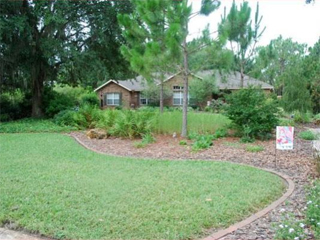|
Article Courtesy of Florida Today
By Sally Scalera
Published April 13, 2017
In
2009, the Florida-Friendly Landscaping™ Legislation (Senate Bill 2080) was
passed. This legislation helps to protect a homeowner’s right, for those living
in an HOA, to adopt FFL practices. Over the years, some legal issues and HOA
disputes have occurred and that is why the Legally Speaking: FFL in the Planned
Community workshop has been scheduled for April 26.
|
The Florida-Friendly
Landscaping™ Program was created by the University of
Florida’s Institute of Food and Agricultural Sciences
Extension Service and the Florida Department of
Environmental Protection to protect Florida’s natural
resources. The various goals of the FFL program are to
protect water quality by reducing pollution, conserving
water, preventing soil erosion and creating wildlife
habitats. FFL contains information geared toward the
following four audiences: Florida Yards and Neighborhoods
Builder & Developer Program, Community Associations and
Property Managers, Green Industries - Best Management
Practices (GI-BMP), and the Florida Yards and Neighborhoods
Homeowner Program.
The nine Florida-Friendly Landscaping™ principles are as follows: Right Plant,
Right Place; Water Efficiently; Fertilize Appropriately; Mulch; Attract
Wildlife; Manage Yard Pests Responsibly; Recycle Yard Waste; Reduce Stormwater
Runnoff and Protect the Waterfront. When these principles are applied, they have
a beneficial impact on the environment. Take for instance the first principle,
right plant, right place. This practice should be used for every plant that you
add to your yard and is just as important for a native plant as it is for a
non-native plant. Every plant has tolerances for soil pH, light conditions, soil
moisture and hardiness zone. Don’t forget to consider the mature height and
spread of the plants you are considering to determine if they will fit, when
full grown, in the location you are considering. |
|
|
Though Florida typically receives an ample amount of rain each year, it doesn’t
always come when you need it or in the amount that is needed. This can result in
plants that suffer from a lack of water, so it is important to provide
supplemental water in the correct amount and coverage that does not waste this
valuable, non-renewable resource.
Considering the condition of the Indian River Lagoon, it is imperative that we
fertilize correctly. Correct fertilization includes only fertilizing if needed,
choosing a fertilizer analysis based on the results of a soil test and,
immediately after fertilizing, lightly water in the fertilizer, with
approximately one-fourth inch of water, to keep the quick release nitrogen from
being carried past the roots, into the ground water and then to the nearest body
of water.
Mulching around your plants protects the soil, conserves water and suppresses
weeds. Managing yard pests responsibly includes the correct identification of
the insect, to make sure that an insect pest is present and not a beneficial
insect that provides free pest control.
Recycling yard trash is a logical step to take because our sandy soil needs all
the organic matter it can get. Why haul it out to the curb when you could
compost it or use it as mulch? Reducing stormwater runoff is crucial because it
is a primary way for pollutants to be carried through a watershed. Every time
stormwater rushes off your property, it can carry nutrient pollutants, soil, and
other contaminants straight to the nearest drain and then to either the lagoon
or the St. Johns River.
For those living on waterfront property, protecting the shoreline is important
for both the water and your yard. Living shorelines can capture nutrients,
keeping them out of the water, and protect the shoreline from eroding. |
